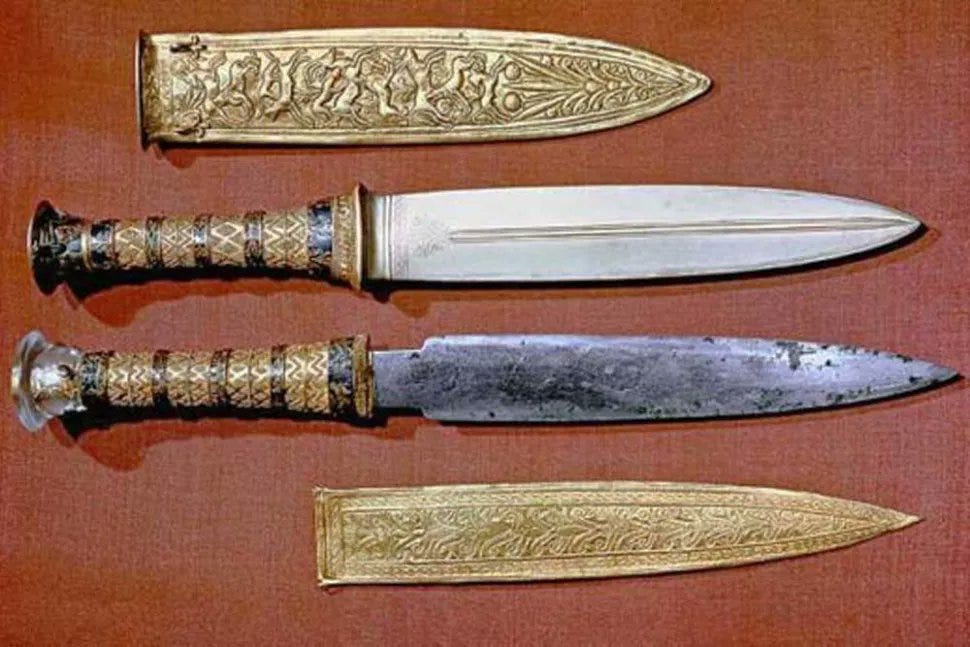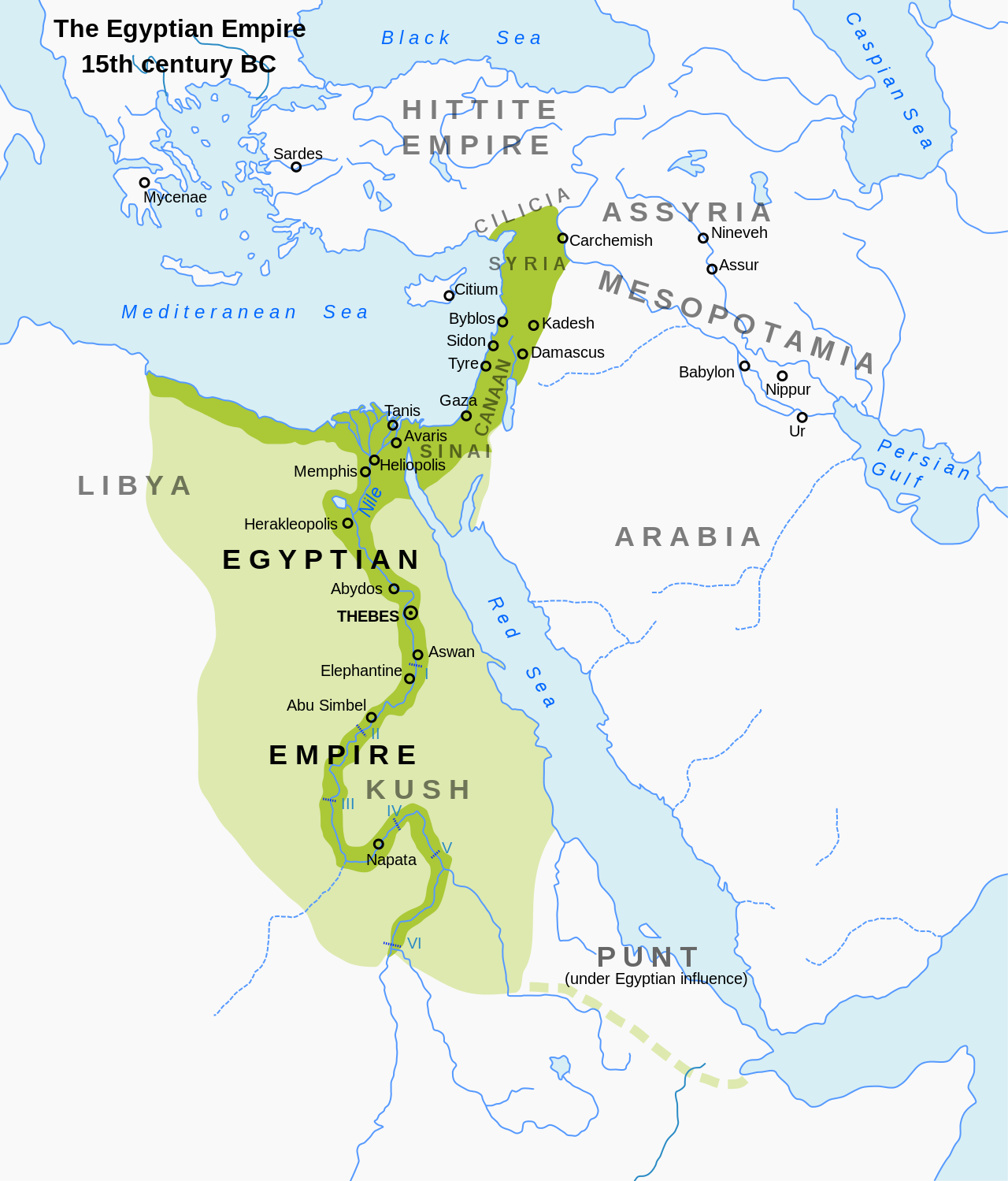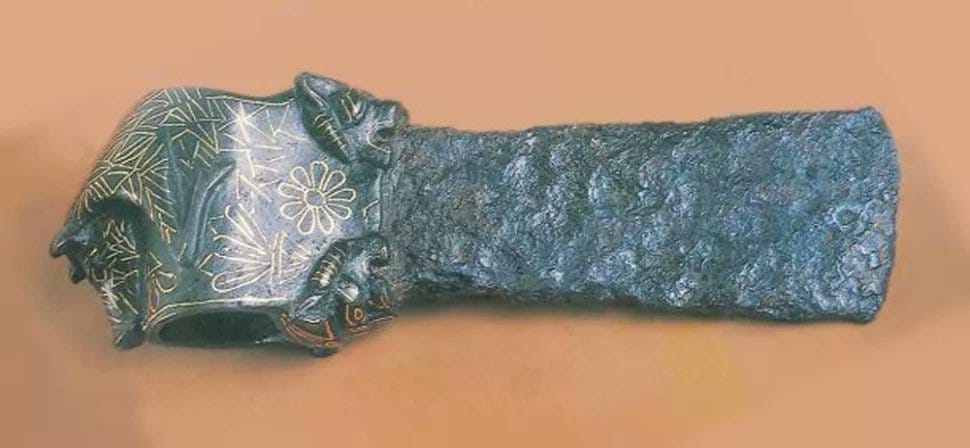King Tut's meteorite dagger: A weapon from the heavens
Tutankhamun's iron dagger was more expensive than his gold one. Its story highlights the significance of minerals in the study of history and political power.
Reading Peter Zeihan last year got me thinking about the deep history of minerals and power. Everyone can understand the demand for gold, but less appreciated are those objects made of tin or even iron that were once in high demand.
A great example of this comes from King Tutankhamun.
When Carter unwrapped the Egyptian pharaoh, he found two daggers, sheathed in gold, in his wrappings. One of the daggers was made of gold, but that wasn’t the one that sparked interest.
The dagger Carter found on Tutankhamun’s right thigh brought the most attention. It was an object out of time. It was made of iron, but came from the Bronze Age, before iron smelting was common.
Now we know the dagger was made from a meteorite. It was a status symbol. And it was probably valued greater than the gold dagger.
The two daggers can be seen above. On the top is the gold dagger. On the bottom is the iron dagger.
The finely crafted blade of iron is homogeneous and non-rusted. Its handle, fashioned from fine gold, features exquisite cloisonné and granulation work and culminates in a rock crystal pommel. The gold sheath is adorned with a floral lily motif on one side and a feather pattern on the other, concluding with the head of a jackal.
The iron blade was special.
Since a kid, I’ve had a fascination with Tut. Yet, it was during Covid that I began reading more comprehensively about Egypt and its place in the ancient world.
Tut was a relatively minor pharaoh who lived at the end of the Eighteenth Dynasty. This dynasty lasted between 1550 BC and 1292 BC and marked the peak of Ancient Egypt’s power.
People typically think that the height of Ancient Egypt came with the pyramids. But by the time of Tut, the pyramids were already 1000 years old.
Instead, the greatest extent of ancient Egypt existed between 1550 BC and 1200 BC. This is when they became a Great Power. They adopted the new technology of chariots and went on a military campaign to bring the entire region under their control.
By the time of Tut, the Egyptian Empire wrapped along the coast of the Mediterranean and reached as north as it would ever go. Northern Canaan, the land of Retjenu, much of Syria and Mittani, in modern day Turkey, were under the influence of Thebes.
Tut’s world was one of excessive opulence for the time, but it was also a world undergoing great change.
Tut was originally born as Tutankhaten, meaning "Living Image of Aten." But his name was changed to Tutankhamun, "Living Image of Amun," later in life when Egypt moved away from Atenism and back towards a more traditional version of the religion.
Tutankhamun’s (likely) father, Akhenaten, introduced Atenism during his reign. In this variant of the ancient religion, worship was centered around Aten, who replaced Amun as the preeminent solar deity.
To go along with his new worship, Akhenaten built a completely new palace and administrative complex at Amarna Aten.
But as soon as Akhenaten died, Egypt did away with Atenism.
Akhenaten’s name was carved out, and Amarna Aten was abandoned. Only recently have archeologists uncovered these massive buildings.
Tut died young, around 18 or 19, as the leader of a sprawling empire already claiming 1,000 years of history. To our benefit, Tut seems to have been forgotten, buried under Ramesses IV. His tomb remained intact and untouched by robbers until Carter opened it in 1922.
And when Carter opened it, he found the dagger and countless other treasures stacked to the ceiling, including many other small iron objects.
The iron dagger found in Tut’s wrappings was, for a long while, a mystery because iron came late to Egypt. But it is generally thought that Tushratta, King of Mitanni, sent several precious iron objects to Amenhotep III, the grandfather of Tutankhamun.
Tut was likely trying to connect his power as descending from Amenhotep, not Akhenaten. It also doesn’t hurt that iron came from the heavens.
Tut’s blade is truly a rare piece because the total catalog of Bronze Age irons is so limited. Nearly every piece of Bronze Age Iron is made from meteorite. Axes from Syria and China dating back to about 1400 BC, a Syrian pendant from 2300 BC, a Turkish dagger from 2500 BC, and beads from Gerzeh, Egypt from 3200 BC all have levels of nickel and cobalt that line up with meteorites. Other than this blade, the Ugarit axe from Syria is probably the most well-known Bronze Age iron.
Axes have been found far and wide in Arabia, suggesting deep trade patterns. But the hematite axes were traded within a small region. As Vincent Charpentier (2019) explained, “In the heart of the Neolithic Middle East, this innovation was specific to Arabian shores between the Musandam and Qatar peninsulas." What is interesting is that, "Within the Middle East, south-eastern Arabia during the Neolithic engaged in a very original means of production of metal objects, as the latter did not focus on copper, a very malleable and much more available material, but on haematite, which was much harder."
The significance of minerals in the study of history and political power cannot be overstated. Minerals have shaped human societies and political power in countless ways, from the use of copper and iron in ancient times to oil, rare earths, and silica of today.
Iron has a deep history with humanity, just like tin.
I think it is lost on most, the importance of tin, but tin is the key ingredient for bronze. By adding tin or arsenic to copper, metalworkers discovered a way to make the material much harder and easier to cast, creating bronze. This development was a turning point for metalworking techniques and marked the transition into the Bronze Age around 3000 BC. In antiquity, tin was a key commodity.
But tin is also a relatively rare element and was mined only in a select number of areas in the classical world. One of the most important deposits in Spain gave rise to the culture we now call Tartessos.
If you have never heard of Tartessos, read the Wikipedia entry on them. Highly developed both politically and culturally, Tartessos was the first organized state in the Iberian Peninsula. They made absolutely beautiful gold objects like the ones below. Not only is Tartessos believed to be the inspiration for the myth of Atlantis, it is also probable that this civilization was the Tarsish of the Bible.
Just last month, the reliefs of five human faces were found at the ancient Tartessian site of Casas del Turuñuelo and it revealed a lot about this society. We don’t know much about Tartessos because the civilization seems to have vanished seemingly overnight perhaps due to a massive fire. But the picture that has emerged with recent excavations suggests that Tartessos equaled Greece and the Etruscans in art.
All of this is due to tin.
This year especially, I am on a journey to understand better the history of minerals, materials, and energy production. Here are some other things I’ve come across:
The U.S. Geological Survey has a lot of good primers, including this one on rare earth elements (REEs).
Scientists have recreated tetrataenite in a lab. If synthetic tetrataenite works in industrial applications, it could make green energy technologies significantly cheaper and ween the US off Chinese rare earths.
The Bushveld of South Africa is where most platinum-group metals (PGMs) are mined. These six metals include ruthenium, rhodium, palladium, osmium, iridium, and platinum. Zeihan is right, the Bushveld "leaks chromium, iron ore, tin, and vanadium," all of which exist in an unadulterated state. Everywhere else it is found, it exists around copper and nickel. The next biggest area where this place is mined is Norilsk, a Soviet-built Arctic penal colony whose workers toil a mile underground.
You know that look of Art Deco metal, the kind which has a dull finish? That is called Monel. The Nickel Institute has this interesting piece, "Historic Monel: the alloy that time forgot." The Wiki is good as well.
Anyone got a good history of the International Nickel Company (INCO)? They seem fascinating, and they made Inconel as well: "Inconel alloys are oxidation-corrosion-resistant materials well suited for service in extreme environments subjected to pressure and heat. When heated, Inconel forms a thick, stable, passivating oxide layer protecting the surface from further attack. Inconel retains strength over a wide temperature range, attractive for high-temperature applications where aluminum and steel would succumb to creep as a result of thermally-induced crystal vacancies. Inconel's high-temperature strength is developed by solid solution strengthening or precipitation hardening, depending on the alloy."
The Meehanite process was developed in the late 1920s and early 1930s, by the Ross Meehan foundry in Chattanooga, Tennessee. This initial discovery was based on the use of calcium silicide to inoculate irons melted in a controlled manner. This resulted in the development of cast irons of greater strength suitable for critical engineering applications. The Wiki.
Aluminum comes from two sources, bauxite or clays. Bauxite is energy intensive in its own right, but clays are even more so. According to the USGS, "The United States and most other major aluminum-producing countries have essentially inexhaustible subeconomic resources of aluminum in materials other than bauxite."
I am also reading up on hydrogen tech and new methods of generating hydrogen more efficiently from water.
Miscellaneous: "The rise and rise of corrugated iron" from The Economist | Iron as ornament, its origins & Evolution | Mineralogy database | Historical prices from 90 minerals from the USGS ; Wiki list of industrial processes.








